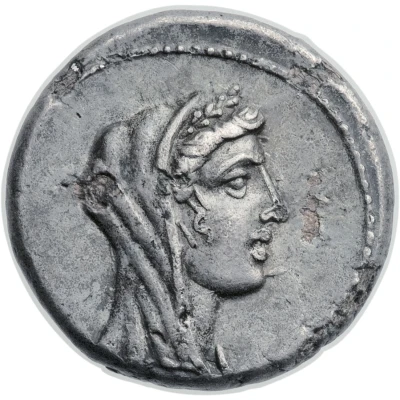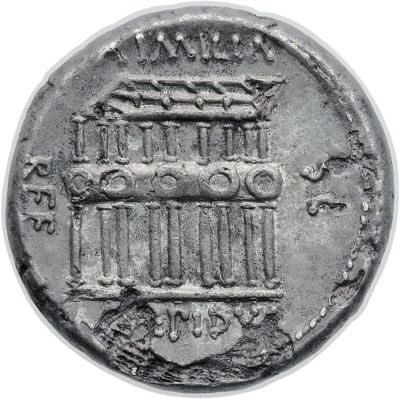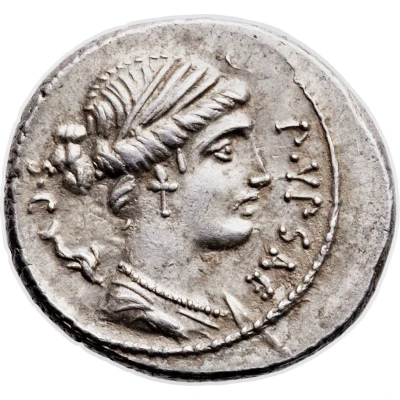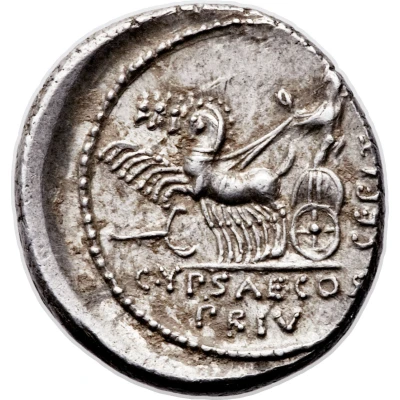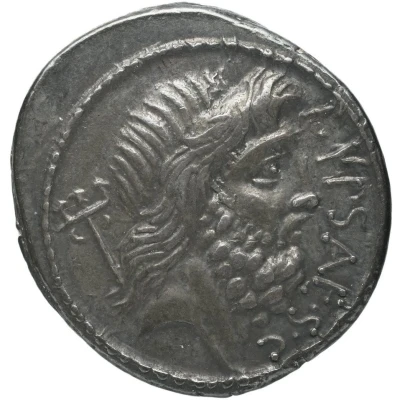
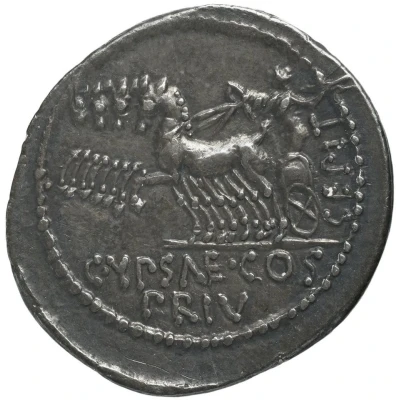

© Bibliothèque nationale de France / Gallica
Denarius Plautia: Publius Plautius Hypsaeus; P•YPSAE•S•C/C•YPSAE•COS PRIV CEPIT 60 BC
60 BC year| Silver | 3.92 g | 17 mm |
| Issuer | Rome › Roman Republic (509 BC - 27 BC) |
|---|---|
| Period | Republic (509 BC - 27 BC) |
| Type | Circulating commemorative coin |
| Year | 60 BC |
| Value | Denarius (1) |
| Currency | Denarius of 16 Asses (141 – 27 BC) |
| Composition | Silver |
| Weight | 3.92 g |
| Diameter | 17 mm |
| Shape | Round (irregular) |
| Technique | Hammered |
| Orientation | Variable alignment ↺ |
| Demonetized | Yes |
| Updated | 2024-10-06 |
| Numista | N#390445 |
|---|---|
| Rarity index | 100% |
Reverse
Jupiter in quadriga, left, holding reins in left hand and hurling thunderbolt with right hand. Border of dots.
Script: Latin
Lettering: C•YPSAE•COS PRIV CEPIT
Unabridged legend: Gaius Ypsaeus Consul Privernum Cepit
Translation: Gaius Hypsaeus, Consul who captured Privernum
Comment
The gens Plautia was a plebeian family.
The reverse commemorates the capture of Privernum by Consul Gaius Plautius Decianus in 329 BC who was intentionally but falsely renamed by the moneyer after his family branch Hypsaeus.
Interesting fact
One interesting fact about this coin is that it features an image of a charioteer driving a biga (a two-horse chariot) on the obverse (front side), which was a common motif on Roman coins during this time period. The charioteer is depicted in a dynamic pose, with his body leaning forward and his arms outstretched as he controls the reins. This image was likely meant to evoke the idea of speed, power, and control, which were all important qualities for a Roman military leader like Publius Plautius Hypsaeus, who is honored on the coin.
